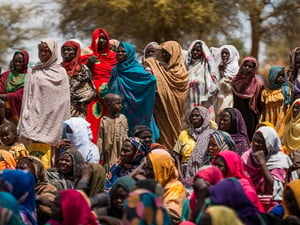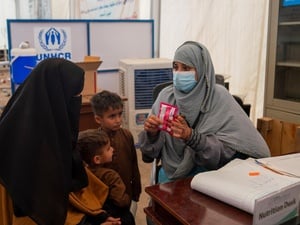Afghanistan: Returns from Pakistan decline with coming winter, insecurity
Afghanistan: Returns from Pakistan decline with coming winter, insecurity
A significant decline in the number of Afghans returning home that began in August appears to be continuing. More than 27,000 refugees went back last week - 8,800 fewer than the first week of September. Contributing to the downturn is the approach of winter and unstable security conditions in parts of the country.
Over the last two weeks, most Afghan refugees - 42 percent - have gone back to central Afghanistan, including Kabul. Another 36 percent have gone back to the north, while 10 percent have returned to the west. Seven percent in the last two weeks have gone back to eastern Afghanistan, while five percent returned to the south. The persistent drought in southern Afghanistan, a region that shelters more than 300,000 internally displaced persons, is the main reason why so few Afghans return to that area.
The number of refugees leaving Pakistan has declined to levels not seen since March, when the repatriation initiative began. Due to the recent decline, UNHCR last Sunday closed its registration centres in Islamabad and Quetta. We plan to close our centre in Karachi in a week, leaving only the Takhtabaig centre in Peshawar, which earlier this year processed sometimes more than 10,000 people daily, open to register Afghans seeking to return home. In addition, mobile teams available in settlements hosting refugees will continue to register Afghans wanting to return home.
In Iran, consistently large numbers of Afghans seeking repatriation assistance continue to come forward. More than 260,000 Afghans have now returned home from Iran, including more than 200,000 refugees who left under the joint programme that got underway in April. More than 60,000 others returned spontaneously.
An important factor contributing to the low number of returns has been continued tension in some areas of the country.









